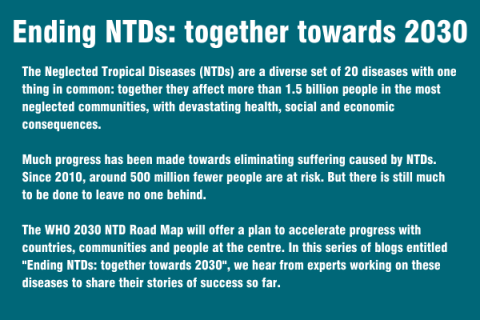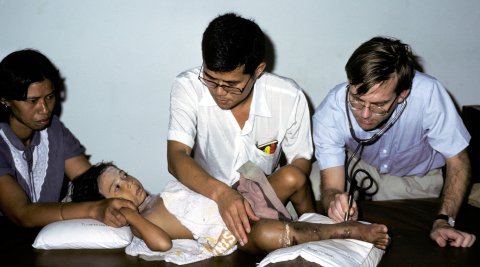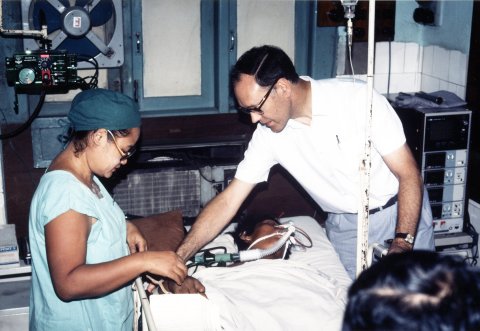International recognition of the public health importance of snakebite: an update on snakebite mortality in India

Crisis in antivenom supply

Back in 1970 when I first encountered snakebites in Northern Nigeria, there were few published accounts of bites by carpet vipers, the most important species in the West African savanna region, and a total of only 47 papers on “snakebite” as a whole retrievable from PubMed.
In 2000, Dave Theakston from the Liverpool School of Tropical Medicine and I, in a letter to the Lancet, sounded the alarm about what we had discovered to be a crisis in antivenom supply in West Africa,1 but this excited very little response because there were no reliable epidemiological data demonstrating the impact on human mortality.
However, since then, and particularly in the last few years, snakebite, once the most neglected tropical disease (NTD), has achieved a high international profile, associated with a more-than-six-fold increase in the number of annual publications (to 308 in 2019).
RSTMH has played an important role in its recognition, by including snakebite as a theme in its meetings, launching International Snakebite Awareness Days in 2018 and 2019, by commissioning a special report on snakebite, and by offering small grants for research on this topic.
The campaign leading to recognition of the public health importance of snakebite

The campaign leading to recognition of the public health importance of snakebite started in November 2008 at a conference in Melbourne, “Global Issues in Clinical Toxinology Conference”, organised by David Williams. It led to the birth of the Global Snakebite Initiative (GSI), an Australia-registered charity whose aim is to provide a collaborative framework to address the neglected global tragedy of snakebite envenoming.
Next, Rob Harrison organised a Wellcome Trust-sponsored Hinxton Retreat on “Mechanism to reverse the public health neglect of tropical snakebite victims”' at Cambridge in September 2015, at which the GSI formed a partnership with the NGO Health Action International (HAI) to lobby for snakebite’s acceptance by WHO as an NTD. Backed by the Costa Rican Ministry of Health, GSI/HAI then convened a side event on “Snakebite and Antivenom” at the World Health Assembly (WHA) in Geneva in May 2016.
Following many discussions and debates, WHO finally announced, in June 2017, their acceptance of snakebite as a “Category A NTD”.
In May 2018, the WHA passed a resolution supporting the prioritisation and promotion of snakebite. A year later, the indefatigable David Williams launched WHO’s Snakebite envenoming - A strategy for prevention and control, a roadmap that called for a 50% reduction in mortality and disability from snakebite envenoming before 2030.
Shortly afterwards, the UK’s Wellcome Trust announced an £80 million programme over seven years led by Nick Cammack; the UK Government’s DfID provided Liverpool School of Tropical Medicine with £9 million for research on new snakebite treatments; and several Private Charities (notably UK’s Hamish Ogston Foundation; USA’s Lillian Lincoln Foundation; and Switzerland’s Kofi Annan Foundation) provided support and donated a further £5 million towards research in this field.
Million Death Study

The call for reliable estimates of human mortality from snakebite had been answered, in 2011, by publication of the results of the “Million Death Study” in India. This provided the crucial evidence that snakebite was a disease of major public health importance.2
Causes of all deaths were assigned by verbal autopsy in 6,671 randomly chosen sample areas (average populations of about 1,000 in each) throughout the whole country, avoiding dependence on data from hospitals.
The direct estimate of deaths attributable to snake bite in 2005 was 46,000 (99%CI 41,000-51,000), or one snake bite death for every two HIV/AIDS deaths. 97% of victims had died in rural areas, only 23% of them in health facilities, explaining why the estimated mortality was more than 20 times higher than the Government of India’s official figure that included only returns from public hospitals. The highest incidence of fatal snakebites was in children, in 5-14 years-old (3% of all deaths in India).
The study’s national coverage allowed identification of the worst-affected states (Uttar Pradesh 8,700 deaths, Andhra Pradesh 6.2 deaths/100,000/year). These data strengthened the establishment, in India and elsewhere, of local and regional initiatives to educate communities about methods for reducing risk and seeking appropriate treatment. These include the National Rural Health Mission (Government of West Bengal and Dr Majumdar Dayal Bandhu), and Snakebite Healing and Education Society (She-India.org and Ms. Priyanka Kadam).
Latest figures from India

Recently, the findings of the Million Death Study have been extended and updated, providing even more astonishing estimates of the burden of snakebite mortality in India.3 The overall number of snakebite deaths has increased from 55,000 in 2001, to about 61,000 in 2014. Combining survey data from 2001-14 with results of a systematic review of 87,590 snakebites reported in the literature between 2000 and 2019 suggested that as many as 1.2 million Indians had died of snakebite during that 20 year period, an average of about 58,000 each year.
The new survey identifies, more precisely, areas and times of highest risk, determined by the prevalence of particularly dangerous species, the overlap of snake and human populations, and the coincidence of seasonal and diurnal patterns of activity. About 70% of deaths occurred in eight higher-burden states (Andhra Pradesh, Odisha, Bihar, Uttar Pradesh, Madhya Pradesh, Chhattisgarh, and Rajasthan); half during the southwest monsoon seasons from June to September; and 80% at altitudes below 400m above sea level.
Identification of the geographical and temporal distributions of snakebites should allow public health authorities in India to deploy preventive and therapeutic strategies more efficiently, towards achieving the WHO’s goal of halving snakebite death and morbidity rates by 2030.
References
1 Theakston, RD, Warrell, DA. Crisis in Snake Antivenom Supply for Africa. Lancet 2000 Dec 16;356(9247):2104.
2 Mohapatra, B, et al., Snakebite Mortality in India: A Nationally Representative Mortality Survey. PLoS Negl Trop Dis. 2011 Apr 12;5(4):e1018.
3 Suraweera, W, et al., Trends in snakebite deaths in India from 2000 to 2019 in a nationally representative mortality study. eLife (accepted for publication June 2020).